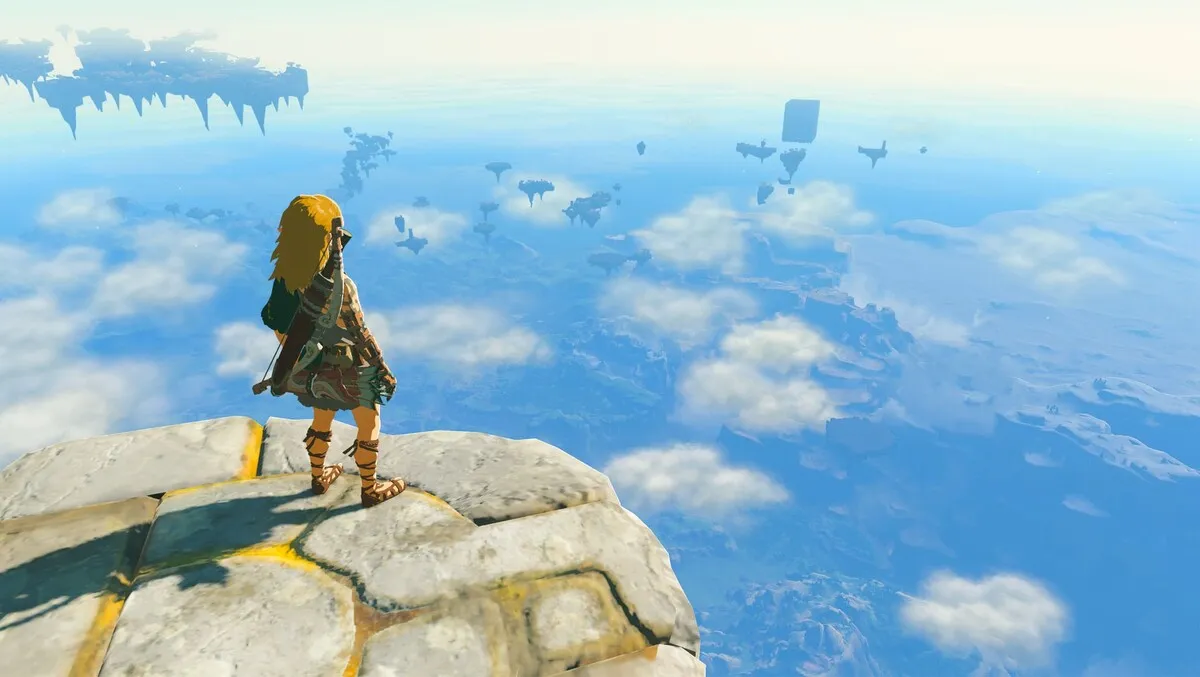
Game review: The Legend of Zelda: Tears of the Kingdom (Switch)
I was first introduced to The Legend of Zelda series when I got to play Ocarina of Time at a friend's house in the late '90s. Our household only owned a PS1 at the time, so the friend's house was the only place I could play on an N64.
I remember not knowing what to do in the game, but I always loved the graphics and music that Ocarina of Time offered. It wasn't until later in my life, when I owned a Wii and Wii U, did I get a chance to play and finish a majority of the 3D Zelda video games. By then, I was hooked on the series.
By the time Breath of the Wild came out in March 2017, I actually got to play it at launch on my Wii U. The Switch was still expensive at the time, so I had to settle for the last-generation version. While I enjoyed a lot of what Breath of the Wild had to offer, my favourite Zelda games were still Ocarina of Time and Twilight Princess.
Fast forward to 2023, and I finally own a Switch to play The Legend of Zelda: Tears of the Kingdom. The game takes place shortly after the events of Breath of the Wild once Link is able to defeat Calamity Ganon. In this game, though, Link and Zelda inadvertently awaken Ganondorf, Link loses his arm, and Master Sword breaks. Unfortunately, Zelda is also missing, and it's up to Link to find her and stop Ganondorf.
Unlike Breath of the Wild, I feel the story in Tears of the Kingdom has more layers. It was interesting to see the type of adventures that Link would have to undertake to defeat Ganondorf this time. There are also some new areas that have been unlocked that weren't available in Breath of the Wild.
Graphically, Tears of the Kingdom is sadly not a huge upgrade in visuals compared to Breath of the Wild in 2017. Since this sequel still has to run on the aging Switch hardware, the graphics are outdated when compared to the next-gen games available on much more powerful hardware, such as the PS5 and Xbox Series X.
That being said, Nintendo has added a new underground chasm to the land of Hyrule that features more deadly and dangerous enemies. At the start of the game, Link is also introduced to some islands that are floating far above Hyrule. The best part about exploring Hyrule both from the ground and air is that there are minimal load times. Link can seamlessly travel anywhere without any interference.
However, one thing some people might be disappointed about is that the majority of Hyrule is the same map that was featured in Breath of the Wild. Several main areas look the same, and the music has hardly changed. Despite this, there are several gameplay changes that have been made to make this game stand out when compared to Breath of the Wild.
Probably the biggest gimmick that has been introduced in this game is Link's new ability called the Ultrahand. While using this ability, Link can pick up and attach objects to make a lot of useful tools and vehicles. For example, it can be used to build bridges, boats and even mechs.
Another cool ability is the Fuse feature. This can be used to fuse weapons with boulders and other things that Link sees in the environment. Attaching things like boulders makes weapons far more powerful than they are normally.
The other two notable abilities include rewinding time and Link being able to ascend and phase through buildings and cave roofs. Many of these abilities are required for you to solve the 120 shrines that are littered throughout Hyrule. These abilities can also be useful during combat too.
Speaking of combat, the one thing I don't like about fighting is that weapon degradation has returned. If you use a weapon more than once, it can break easily, and you must find a new one. I was hoping that weapon durability would have been improved, but sadly it's still an annoying feature that was kept from Breath of the Wild.
While combat is the same, traversing the game world is slightly easier than it was before. Traversing bodies of water is much easier this time thanks to Link's ability to craft rafts. He can also use rockets to propel himself to higher platforms, such as steep cliffs. Finding towers is much easier in this game, too, because you don't have to climb to the top to uncover an area of the map. Instead, Link is propelled from the bottom to the top as he uses the Purah Pad to scout new areas in Hyrule.
The only people that I feel might not like Tears of the Kingdom are people that want something new to experience. Aside from Link's new abilities, the combat and overall quest structure are similar to that of Breath of the Wild. You will still need to find towers and shrines in order to power up Link to tackle the harder missions and bosses in the game.
While the graphics are outdated and the map is mostly reused, I still had a very fun time playing The Legend of Zelda: Tears of the Kingdom. The biggest drawcard of this game is Link's new abilities that allow him to craft and build lots of interesting new things. That being said, people that loved Breath of the Wild are more than likely still going to like what Tears of the Kingdom has to offer too.
Source: 9.0/10


